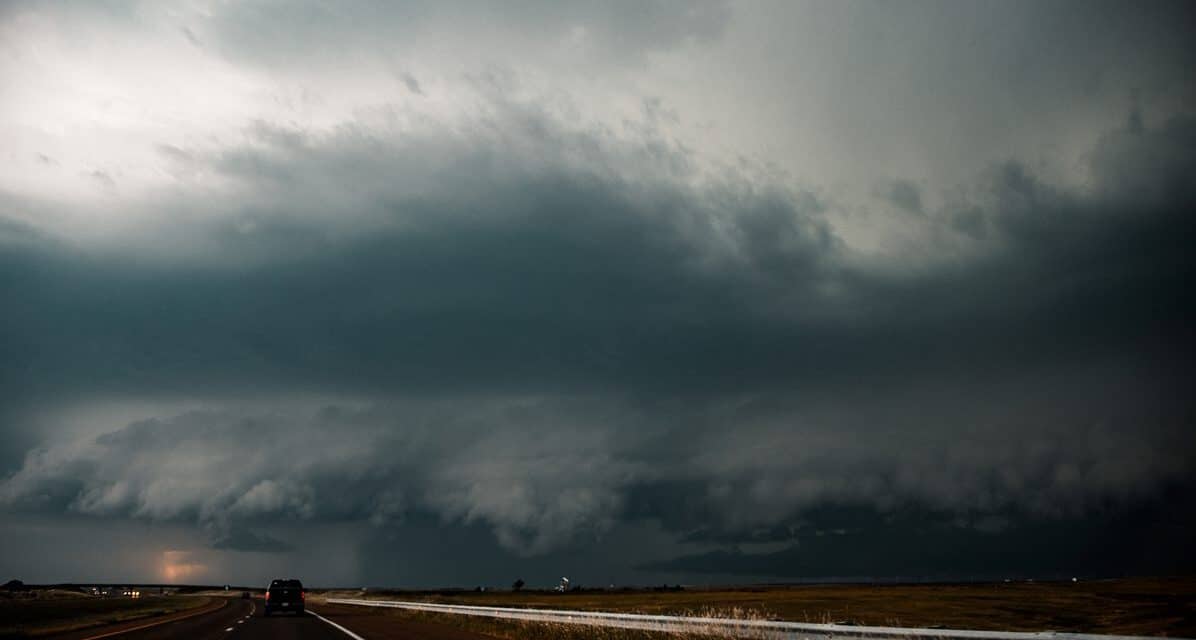Tornadoes are powerful engines of destruction, and they can be devastating in many regards. It can be challenging to determine when and where a tornado will strike. Perhaps, you want to move there but want to avoid tornadoes as much as possible. In that case, what part of Kansas should you avoid?
Sherman County has the most tornadoes in Kansas. Between 1950-2020, Sherman County saw 113 occurrences of tornadoes. This was more than any other county in Kansas. The frequency of destructive weather correlates with the geography of the Midwest and the surrounding boundaries.
Although weather patterns create storms. There are other factors that create the optimal conditions for a tornado. Keep reading to learn more about how the plains play a role in this mystery.
Why Does Sherman County Get More Tornadoes?
On average, the tornado season peaks in May and begins to taper off in early July and throughout the summer. Geography and weather patterns can significantly influence the likelihood of tornadoes.
These geological marvels are so impactful because:
- The Rocky Mountains span from north to south, creating a natural barrier around Kansas and nearby states.
- In addition, the Gulf of Mexico acts as the second barrier surrounding Kansas, contributing to the phenomenon in Sherman County.
- Sherman County’s highest elevation is 3,983 feet above sea level, which is second to Wallace County at 4,039 feet.
Factors like elevation can increase wind shear due to differences in pressure gradients, air friction, and air density. These patterns also directly contribute to the increased risk of tornadoes.
Geography in Sherman County Leads to More Tornadoes
We discussed why Sherman County is subject to increased risk of tornadoes, but how exactly does it work? Generally, tornadoes form when cold, dry air passes over warm, humid air. The warm, moist air begins to pass upward through the cold air, creating an updraft.
As the updraft increases, it causes rotation, usually due to increased wind speed. Increased wind speed is due to higher pressure gradients resulting from the increase in height. Warmer air is less dense but occupies more space. Thus, going up in altitude and the pressure gradient slanting upward increases the pressure, resulting in higher winds.
There is also less surface friction in higher elevations due to a lack of trees or dense, large cities or other structures. So, as elevation or height increases, the surface friction lessens, allowing air to move faster.
Air density is also highest at the surface (ground) and decreases with height. Therefore, it takes more force to move dense air than it does to move less thick air. So, as air density decreases with altitude, air moves faster than it would at the surface, increasing wind speed.
This cycle continuously fuels the storm system and eventually produces a mesocyclone from the increased upward wind speed. Warm air is drawn inward, propelling more rotation and fueling a supercell storm. Finally, a full-blown tornado may form.
When do Tornadoes Occur in Sherman County?
On average, only a handful of tornadoes happened between 7-8am. However, from 1950 to 2009, most tornadoes occur in Kansas from 4-8pm. So even though the sun is usually at its highest point around 12-2pm, the heat index isn’t at its peak until about 4-5pm. This leads to very active evenings.
Tornadoes occur in Sherman County during the late afternoon and on into the evenings.
| Date | Time | Rating |
| 05/04/1960 | 18:30 | F |
| 05/17/1962 | 19:35 | F |
| 05/06/1973 | 16:50 | F0 |
| 05/22/1998 | 18:50 | F0 |
| 05/23/2010 | 19:07/19:16 | F1/F0 |
| 06/09/1960 | 18:20/18:24 | F/F0 |
| 06/23/1962 | 19:00 | F |
| 06/08/1984 | 19:25 | F0 |
| 06/10/1994 | 16:57/17:15/17:53 | F0/F0/F0 |
| 06/14/2003 | 16:33 | F0 |
| 07/06/1952 | 17:00 | F2 |
| 07/06/1965 | 20:00 | F |
| 07/01/1993 | 20:07 | F1 |
| 07/20/2009 | 17:25/17:34 | F0/F0 |
| 07/17/2012 | 16:50 | F0 |
While most would agree that one tornado a day is enough, Kansans know that you may see more than one, and some can be particularly destructive. Tornadoes are graded using the EF scale.
Tornado Count for Sherman County
The EF scale assigns a number value to a tornado based on the estimated wind speed needed to produce certain levels of damage. The NWS assigns a rating from EF0 to EF5. Wind speeds can be as low as 65 miles an hour and roar over 200mph.
Typically, Tornado occurrences are at the worst in Sherman County during June, May, and July consecutively.
On average, June produced 36 tornadoes over 19 tornado days on record.
| Month | April | May | June | July | Aug |
| Tornado Count | 3 | 33 | 36 | 18 | 3 |
| Total Tornado Days | 3 | 19 | 19 | 15 | 2 |
Therefore, June is historically the worst month for Tornadoes in Sherman County. Compare this data with the average tornadoes per county, if each county in Kansas averages 1,000 square miles, is 30-50 cyclones per year.
Size of Sherman County Ranks It More Likely to Have Tornadoes.
Kansas is ranked 3rd in tornadoes per 100 square miles at 4.4 after Oklahoma and Florida successively. Focusing on the counties with the highest elevation, Sherman County is 1,056 square miles, and Wallace County is 913 square miles.
Generally, Sherman County is most likely to have more tornadoes occur than Wallace County.
If you compare Sherman with Butler County, which spans 1,429 square miles, you might think it would have the most tornadoes: however, its highest elevation pales in comparison at around 1630 feet.
Population Count Affects Sherman County’s Tornadoes
It is important to know that the population has become more aware of tornadoes and how to track their movements throughout the history of recording these events. As mentioned earlier, Wallace County is the only county that averages a higher elevation than Sherman County.
So, Wallace County has a smaller population of approximately 1,570 people while Sherman County boasts nearly four times that much, around 6,100.
These other factors drive the high record of tornado sightings in Sherman County:
These factors support why tornadoes are spotted and recorded more often in Sherman County.
Conclusion
While tornadoes strike heavily in Sherman County, you will likely encounter more twisters in this state than you will anywhere else. However, if you are desperate to settle down in Kansas, you should try Wyandotte County; it is a small county with only 10 tornadoes that touched down from 1950 to 2020.



